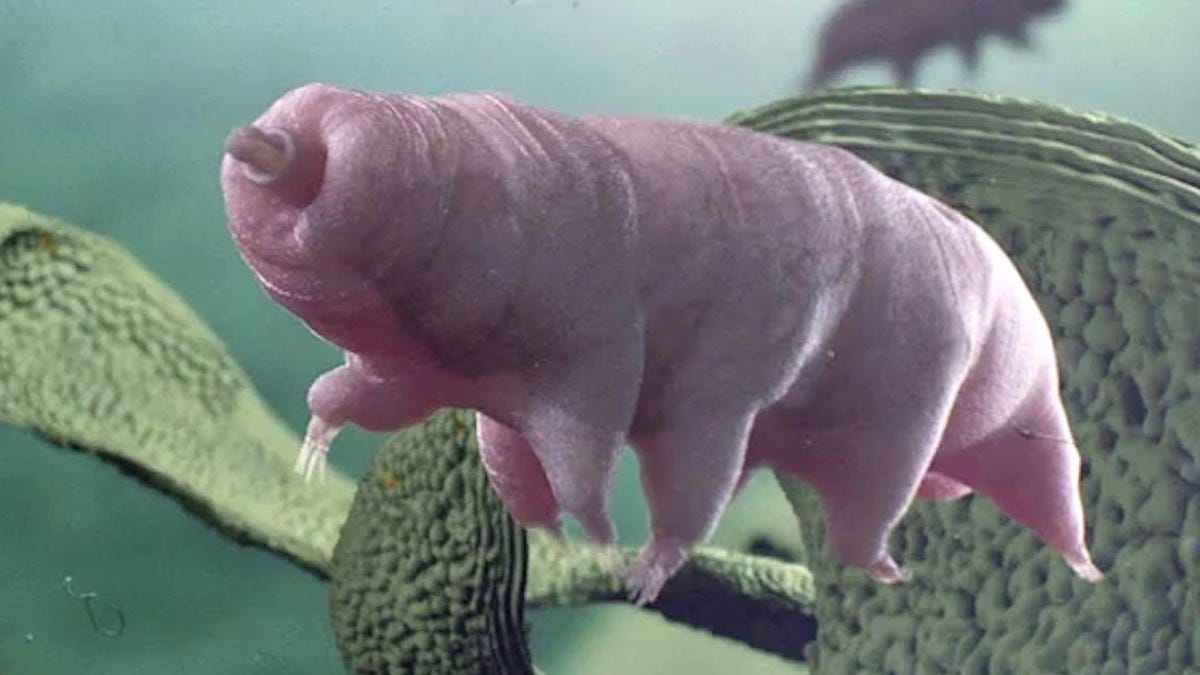Super-tough tardigrades fired from a gun to test their invincibility
Nature's microscopic water bears can survive freezing, radiation and more. Now scientists have turned them into bullets to find their limits.

Tardigrades can survive extreme conditions including water, ice and even space.
Scientists have identified a new breaking point for one of the most indestructible life-forms known to humanity.
Tiny tardigrades, aka water bears, are among the hardiest animals we know of. The microscopic wonders are able to survive extreme temperatures and the vacuum of space. That has implications for an idea called panspermia, which suggests some life-forms could move between worlds, perhaps by hitching a ride on a comet or meteorite.
But for resilient little creatures like tardigrades to make such a trip, they need to survive not just travel through space, but also impact. One batch of water bears is known to have already accidentally impacted the moon: When the Israeli lunar lander Beresheet crashed there in 2019 it was carrying -- among other things -- thousands of dehydrated tardigrades.
This led Alejandra Traspas, a Ph.D. student at Queen Mary University of London, to wonder if the minuscule astronauts might have survived. Traspas worked with her supervisor, planetary scientist Mark Burchell from the University of Kent, to design an experiment to simulate the experience of impacting another body in space like a planet or moon.
They got their hands on some tardigrades, which were frozen and put in what is essentially a bullet loaded into a two-stage light gas gun, a device NASA uses to simulate impacts in space.
The water bear bullets were fired at targets made of sand at varying velocities to see how the extremophiles fared. The results showed that they could survive impacts at speeds up to almost a kilometer per second (2,000 miles per hour) and shock pressures up to 1.14 gigapascals.
Any faster though and "they just mush," Traspas told Science Magazine in an article published this week.
She adds that while Beresheet may have crashed at lower speeds, the shock pressure from the metal spacecraft hitting the moon's regolith would have been much higher, spelling doom for the tardigrades on board.
"We can confirm they didn't survive."
All of the results are published in a paper in the journal Astrobiology. They aren't optimistic for the prospects of panspermia and interplanetary travel via uncontrolled crash landing.
"Arrival of a tardigrade on Earth, for example by way of a meteorite impact, is not likely to be a viable means of a successful transfer even for such hardy organisms," the study reads. "There are other places in the Solar System, however, where biological material, during transfer, would encounter low shock pressures."
The scientists note that transfer between a planet and its moons, such as Mars and Phobos and even Earth and our own moon could still be possible as some portion of rocks and debris in space could impact at lower speeds and pressures.
The research also has implications for how future missions to the outer solar system might try to look for life by sampling the watery plumes that emanate from Enceladus and Europa.
The takeaway for anyone hoping to find tiny aliens: It might be wise to slow down as much as possible and use materials that allow for a soft landing when collecting those samples to keep from killing any extra-terrestrial water bear cousins on impact.
Follow CNET's 2021 Space Calendar to stay up to date with all the latest space news this year. You can even add it to your own Google Calendar.

